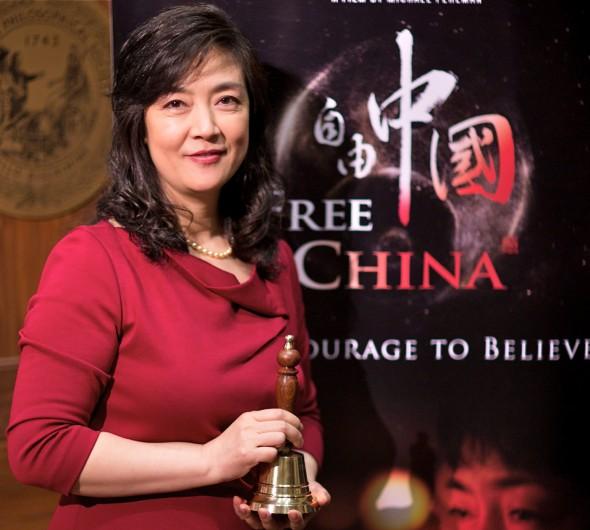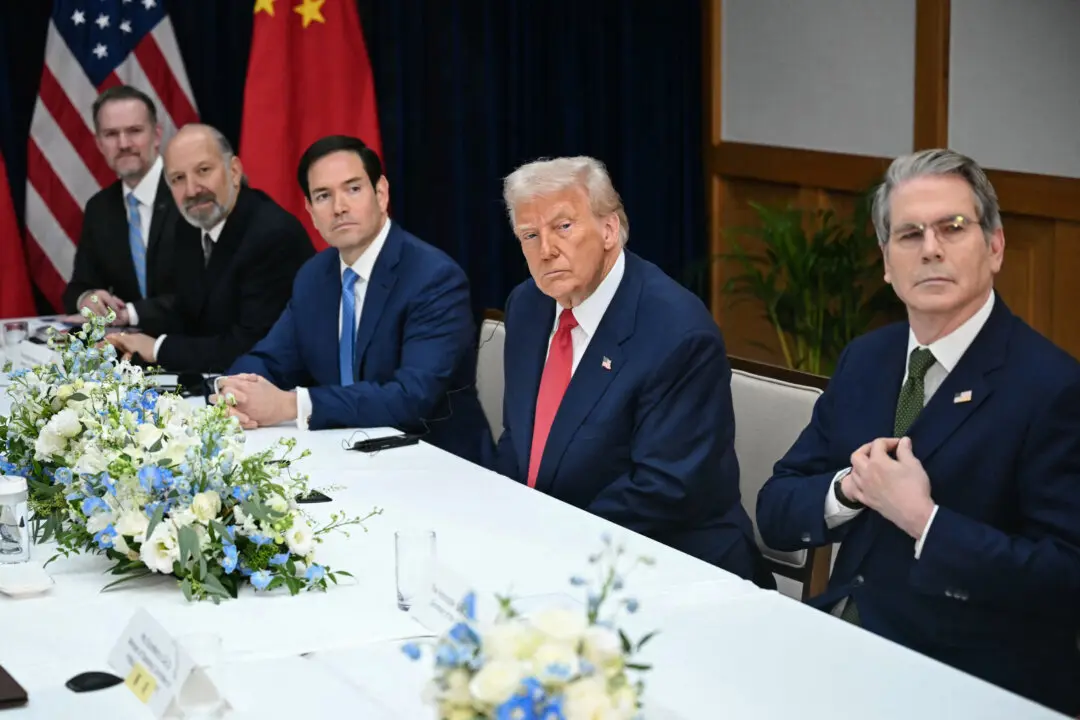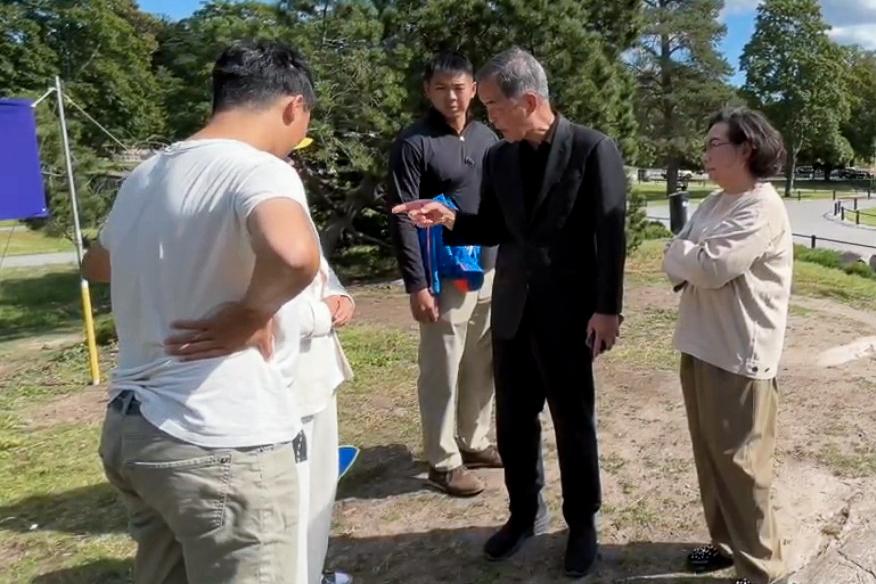When Julie Keith of Damascus, Ore., opened a Halloween graveyard kit purchased at the local Kmart to decorate for her daughter’s birthday party, she didn’t realize that what she was going to see would come to be known around the world.
Inside was a handwritten note from an inmate in the Masanjia Labor Camp in China who asked for help. Keith felt she had to respond.
She posted a copy of the letter to her Facebook page. Her friends began discussing and circulating it. A human rights organization took notice. Then the Oregonian published an article about Keith and the letter. Within days, dozens of news outlets around the world carried the story.
With one Facebook post, Julie Keith had brought more attention to the issue of slave labor in China than the work of human rights activists over the past few decades.
Known to Human Rights Advocates
That slave labor is used to make products in China is no secret. The U.S. Customs and Border Protection website states that most cases of products found to be made with forced labor are from China.
Since July 1999, when the Chinese regime launched a campaign to eradicate the traditional spiritual practice of Falun Gong, the issue of slave labor has become entangled with religious persecution. Most forced labor camps (formally known as camps for re-education-through-labor, RTL) and prisons became packed with Falun Gong practitioners. Forced labor for long hours was one of the measures used to try to force Falun Gong adherents to give up their beliefs.
For the past 13 years, the Falun Gong website Minghui (en.minghui.org) has published numerous witness and victim accounts about making products for export to the United States, Europe, and Japan.
From March 2003 to May 2004, the World Organization to Investigate the Persecution of Falun Gong (WOIPFG), a U.S.-based rights organization, published three reports on China’s export of forced-labor products.
In 2011, Aljazeera (English) made a film series titled “Slavery, 21st Century Evil.” The episode “Prison Slaves” presents two witnesses’ testimonies.
One is Charles Lee, a Falun Gong practitioner and U.S. citizen. He was accused of trying to tap into China’s cable TV broadcast system for the purpose of broadcasting information about the persecution of Falun Gong and sentenced to three years in prison. Lee was forced to make products for export to the United States.
Another witness is a Christian house-church member, also jailed for her religious beliefs. She was also forced to make products in prison. It is believed that one of the reasons the regime kicked Aljazeera (English) out of China is because of this film.
Victims Step Forward
Although the use of slave labor in China is well-known, specific cases are only rarely exposed, much less prosecuted and convicted. In each specific case that slave labor has been exposed, there has been a brave victim who took the first step.
In probably the only reported case of a conviction in the United States for using forced labor in China, a victim developed the evidence. Peter B. Levy was the owner of an office-products company that made binder clips in China for export to the United States. He lost business to his competitor, who made the same product in a Nanjing prison.
Mr. Levy went to Nanjing, found the evidence, and videotaped it. The New York Times reported the conviction of the Chinese company, probably the only report of such a case by a major U.S. media outlet.
Levy did his investigation in the period from 1995 to 1997. Once the regime started to persecute Falun Gong in July 1999, the population of the forced labor camps and prisons swelled. The capacity of the labor camps and prisons increased, and the amount of forced-labor products exported to Western countries also increased, along with the information, clues, and witness and victim accounts about China’s export of forced-labor products.
However, media coverage, efforts by law enforcement, and public awareness did not increase accordingly, until now.
Jennifer’s Story
Jennifer Zeng, a Falun Gong practitioner and one of two main characters in the recent documentary film “Free China,” was forced to make products in one of Beijing’s forced labor camps. After she escaped to Australia, she found one of the products that she had made in the labor camp—the stuffed toy rabbit for Nestle’s Nesquik advertising campaign.
When she was making the rabbits, she knew, as did her guards, that they were made for Nestle. She later found the same rabbit on Nestle’s website. The order to the labor camp was not made directly from Nestle but from a Chinese company, Beijing Miqi Toys Company.

Jennifer Zeng is pictured at the award ceremony for the Free Speech Film Festival, on May 12 in Philadelphia. (Edward Dai/The Epoch Times)
The Sydney Morning Herald reported Jennifer’s story. It seemed that nothing else could be done on this issue. Western governments, media, and human rights organizations seemed to have little influence on Chinese companies.
Yet, a reporter from Le Temps (Geneva) in Beijing decided to dig deeper. Refused an interview request by Miqi Toys Company, Frederic Koller did his own investigation, and his report was published in Le Temps in Geneva in April 2002.
Almost one year later, Miqi Toys Company formally invited the reporter to revisit its facility. The company said that it had lost 70 percent of its customers since the publication of the report and denied it had subcontracted the rabbits to the labor camp.
If Jennifer hadn’t searched for the product that she was forced to make in the labor camp, if the reporter from Le Temps hadn’t carried out his own investigation, those who committed the crime would never have been exposed and caught. Sometimes the effort seems useless. Yet the impact is real, and every effort counts.
Henan Rebecca Hair Products
A WOIPFG report about the Henan Rebecca Hair Products Inc. (Rebecca) presented witness testimony that at least two forced labor camps made the hair products for Rebecca. Most of the people forced to do the work were Falun Gong practitioners.
Jamil Anderlini, a reporter from South China Morning Post (SCMP) decided to do some investigation. He went to Xuchang, the location of Rebecca and the labor camps. The guards at the labor camps and the workers at Rebecca confirmed for the reporter that the half-finished products were made in labor camps.
Jamil Anderlini also reported that six of the world’s largest financial institutions had bought shares of Henan Rebecca and they are all among Rebecca’s top-10 shareholders. Deutsche Bank, HSBC, ING, Merrill Lynch, Morgan Stanley, and UBS all declined to comment on the issue. The report was published in August 2005.
In 2006, Aina Hunter, a reporter from the Village Voice, picked up the trail when she was doing research for a report on hair extensions. She got two replies from Deutsche Bank and ING. She also reported how WOIPFG had filed a petition in 2004 to alert the Department of Homeland Security of alleged abuses. Nothing came of the petition.
Aina Hunter reported that the U.S.-China Security Review Commission’s chairman, C. Richard D’Amato, had written a letter to the commissioner of U.S. Customs and Border Protection and to Sens. Joe Lieberman, Susan Collins, and Bill Frist about the aledged violation of U.S. law by Henan Rebecca.
D’Amato hadn’t heard back from any of them when Hunter’s article was published on March 28, 2006.
No Cooperation
The effect of the Les Temps article about Jennifer’s case has so far been an exception. Without cooperation from the Chinese side, the U.S. side doesn’t seem to have many options to affect those engaged in forced labor or bring them to justice.
In fact, though, in China the law prohibits the export of forced-labor products. According to a State Council regulation issued on Oct. 5, 1991, individuals and companies engaged in the export of forced-labor products can be punished, and the goods made can be confiscated by Chinese customs.
However, in most of the cases, U.S. customs officials have complained that it’s almost impossible to get cooperation from Chinese officials.
In Jennifer’s case, it was not surprising that the Chinese Ministry of Justice claimed that “following an investigation carried out by the Office of RTL of Beijing, no camp has ever produced toys for the Nestle company.”
The office that carried out the investigation was the same one that was accused of violating the law. The mass production of forced-labor products is a state action in China. How can anyone expect to get cooperation from Chinese authorities?
Estimating how many products consumed in the United States were made in Chinese labor camps and prisons is difficult. However, nobody, not even a Chinese company with very low-wage workers, can compete with those who work more than 15 hours a day with no weekends, no holidays, and no payment—if you don’t consider 10 yuan (US$1.60) per month as payment.
Mr. Levy manufactured his binder clips in China. The only difference between him and his competitor is that he paid his workers.
Things played out differently when Ms. Keith posted her message on Facebook. Social media spread the word. Media started to pick up the story. Kmart’s parent company, Sears, responded, as did the U.S. government.
The Falun Gong practitioner in Masanjia Labor Camp made the first move by risking his or her life. Julie Keith made her move. If everyone makes his or her move, we can make a difference. We do so not only for those who ask for help, we do so for ourselves.





